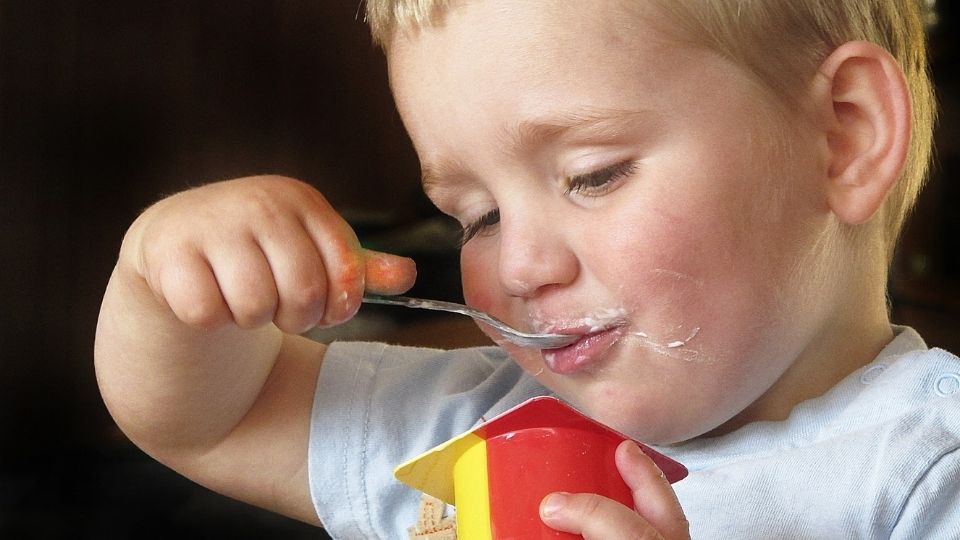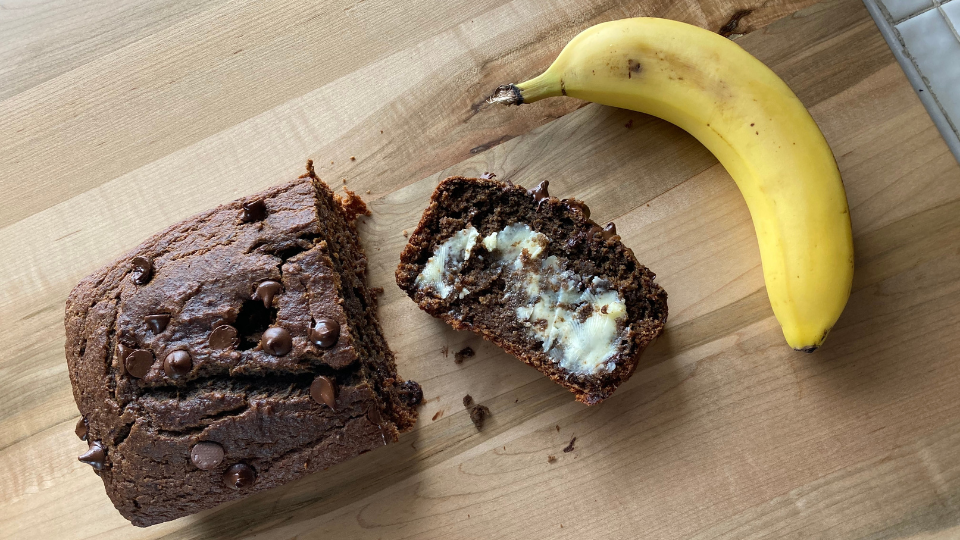Tips to Encourage a Healthy Body Image in Your Child

Parents have an important role in helping their child develop a healthy body image. From as young as age three, children begin modeling their parents’ behaviors, thoughts, and lifestyle choices (McCabe et al., 2007). Research is finding that a child’s dieting choices are heavily influenced by their environment, especially in those first few years of life (Hendy, Gustitis, & LeitzelSchwalm, 2001). For example, children who surrounded by family who frequently speak negative about their weight are at higher risk for having poor body image later in life (Ek et al., 2016). This fact sheet will explore a variety of ways to encourage a healthy body image in both you and your child.
It All Starts With You
There are many ways to help promote a healthy body image in your child. Most importantly, it starts with establishing a healthy body image within yourself. Children tend to model health-related behaviors exhibited by their parents, even those behaviors parents don’t want children to model (McCabe et al., 2007). As a result, modeling healthy behaviors is an important way to encourage your child to make healthy lifestyle choices. There are many behaviors you can model during mealtime—or "at the table"—that may seem insignificant but are actually simple ways to increase your child’s body satisfaction and help establish long-term healthy eating habits.
"At the Table" Tips
- Eat the foods you give your child to eat. This may seem silly, but if you don’t eat the same foods that you put on their plate, then they won’t eat them either. It may take a while for a child to try a new food, but if you are eating that food with them, eventually they will be willing to try it (Hendy et al., 2001).
- Don’t restrict your child’s food intake. Children will naturally eat when they are hungry and stop eating when they are full—they are very intuitive eaters (Tribole, & Resch, 1995; Tylka, Lumeng, & Eneli, 2015). Children who experience food restrictions tend to weigh more and experience greater body image issues as they age (Ek et al., 2016; Fox et al., 1994). One study found that over 50% of children, both male and female, who experienced consistent food restrictions grew up to be overweight or obese (Balantekin, Savage, Marini, & Birth, 2014).
- Present a wide variety of food options for your child and let them decide what they want to eat. This gives them some control over what they get to eat and also shows them you won’t restrict their intake (Ek et al., 2016; Satter, 1987).
The tips above are helpful to implement during mealtimes; however, there are a variety of other ways you can help your child develop a healthy body image even when you are not at the dinner table. The list below includes “away from the table” tips to consider.
"Away From the Table" Tips

- Pay attention to your own hunger and fullness cues. Try to avoid consistently letting yourself get too hungry—this can cause overeating and guilty feelings. Eat when you start to feel empty but not ravenous and stop when you feel satisfied but not full. Young children naturally have the ability to listen to these internal cues, although oftentimes, that changes as they grow older. With that said, if parents pay attention to their hunger and fullness cues, a child is much more likely to maintain that skill as well (Tribole & Resch, 1995; Tylka et al., 2015).
- Promote mindful eating. This process involves being aware of your surroundings but also focusing on the sensory properties of food and taking time to really enjoy what you are eating. Stay in the moment, but do not disregard either the past or the future. Mindful eating has been shown to help with hunger and fullness cues and provide greater satisfaction with your diet (Seguias & Tapper, 2018).
- Refrain from labeling foods as “good” or “bad.” This can prevent the guilt that often comes along with eating “bad” foods. Instead, discuss foods as “most of the time” and “some of the time” foods. That way your child feels that no foods are off limits and feels less pressure to eat a certain way (Ek at al., 2016; Satter, 1987; Tribole, & Resch, 1995).
- Stop talking about and practicing dieting as a means to control your own weight; instead, focus on well-balanced eating. Research has consistently found that children are two times more likely to diet before adolescence when they grow up in a home where weight is a major concern (McCabe et al., 2007; Ricciardelli, McCabe, Holt, & Finemore, 2003).
- Do not obsess about weight and focus more on how you feel. This promotes a focus on health without letting a number define yourself.
- Participate in exercise and other activities that you enjoy, not just for weight control. Being active can be fun and can also be a great bonding experience for your family. Exercise does not have to take the formal approach of gym memberships and running clubs—do whatever gets you moving without keeping you counting down the minutes to the end (World Health Organization [WHO], n.d.). Examples of this are: going to a playground, playing sports in your yard or at a park, playing tag or hide-and-go-seek outside, going on bike rides around your neighborhood, etc.
- Avoid over emphasizing appearance, whether through direct or offhand remarks, comments, or behaviors. Do not make negative comments about anyone’s appearance, size, or shape—this includes your own appearance, size, and shape. Try to focus on positive attributes that come from the “inside,” and discuss how beauty can be found in all shapes and sizes.
Putting It All Together
The early years of a child’s life are important for the modeling and introduction of healthy behaviors and habits. Developing a positive body image in your child has the potential to change the way they look at themselves and their body for the rest of their lives. Although these ideas are not exhaustive lists of ways to promote a positive body image, this process requires a lot of patience and conscious thought that will help both you and your child in the long run. In the end, the goal is for a child to be both their happiest and healthiest selves.
References
- Balantekin, K. N., Savage, J. S., Marini, M. E., & Birch, L. L. (2014). Parental encouragement of dieting promotes daughters’ early dieting. Appetite, 80, 190-196. doi: 10.1016/j.appet.2014.05.016
- Ek, A., Sorjonen, K., Eli, K., Lindberg, L., Nyman, J., Marcus, C., & Nowicka, P. (2016). Associations between parental concerns about preschooler’s weight and eating and parental feeding practices: Results from analyses of the Child Eating Behavior Questionnaire, the Child Feeding Questionnaire, and the Lifestyle Behavior Checklist. PLoS ONE, 11(1), 1-20. doi: 10.1371/journal.pone.0147257
- Fox, K. R., Page, A., Peters, D. M., Armstrong, N., & Kirby B. (1994). Dietary restraint and fatness in early adolescent boys and girls. Journal of Adolescence, 17, 149-161. doi: https://doi.org/10.1006/jado.1994.1015
- Hendy, H. M., Gustitis, C., & Leitzel-Schwalm, J. (2001). Social cognitive predictors of body image in preschool children. Sex Roles, 44(9/10). doi: 0360-0025/01/0500-0557$19.50/0
- Kluck, A. S. (2009). Family influence on disordered eating: The role of body image dissatisfaction. Body Image, 7, 8-14. doi: 10.1016/j.bodyim.2009.09.009
- McCabe, M. P., Ricciardelli, L. A., Stanford, J., Holt, K., Keegan, S., & Miller, L. (2006). Where is all this pressure coming from? Messages from mothers and teachers about preschool children’s appearance, diet and exercise. European Eating Disorders Review, 15, 221-230. doi: 10.1002/erv.717
- Ricciardelli, L. A., McCabe, M. P., Holt, K. E., & Finemore, J. (2003). A biopsychosocial model for understanding body image and body change strategies among children. Journal of Applied Developmental Psychology, 24, 475-495. doi: 10.1016/S0193-3973(03)00070-4
- Satter, E. (1987). How to get your kids to eat: But not too much. Bull Publishing Company.
- Seguias, L., & Tapper, K. (2018). The effect of mindful eating on subsequent intake of a high calorie snack. Appetite, 121, 93-100. doi: 10.1016/j.appet.2017.10.041
- Tribole, E., Resch, E. (1995). Intuitive eating. St. Martin’s Press.
- Tylka, T. L., Lumeng, J. C., & Eneli, I. U. (2015). Maternal intuitive eating as a moderator of the association between concern about child weight and restrictive child feeding. Appetite, 95, 158-165. doi:10.1016/j.appet.2015.06.023
- World Health Organization (WHO). (n.d.). Physical activity and adults: Recommended levels of physical activity for adults aged 18 - 64 years. Retrieved from http://www.who.int/dietphysicalactivity/factsheet_adults/en/
Authors
Megan Jensen student dietitian; Mateja R. Savoie Roskos PhD, MPH, RD; Jaqueline Neid-Avila MDA, RDN; Brittany Bingeman MS, RDN
Related Nutrition Articles






